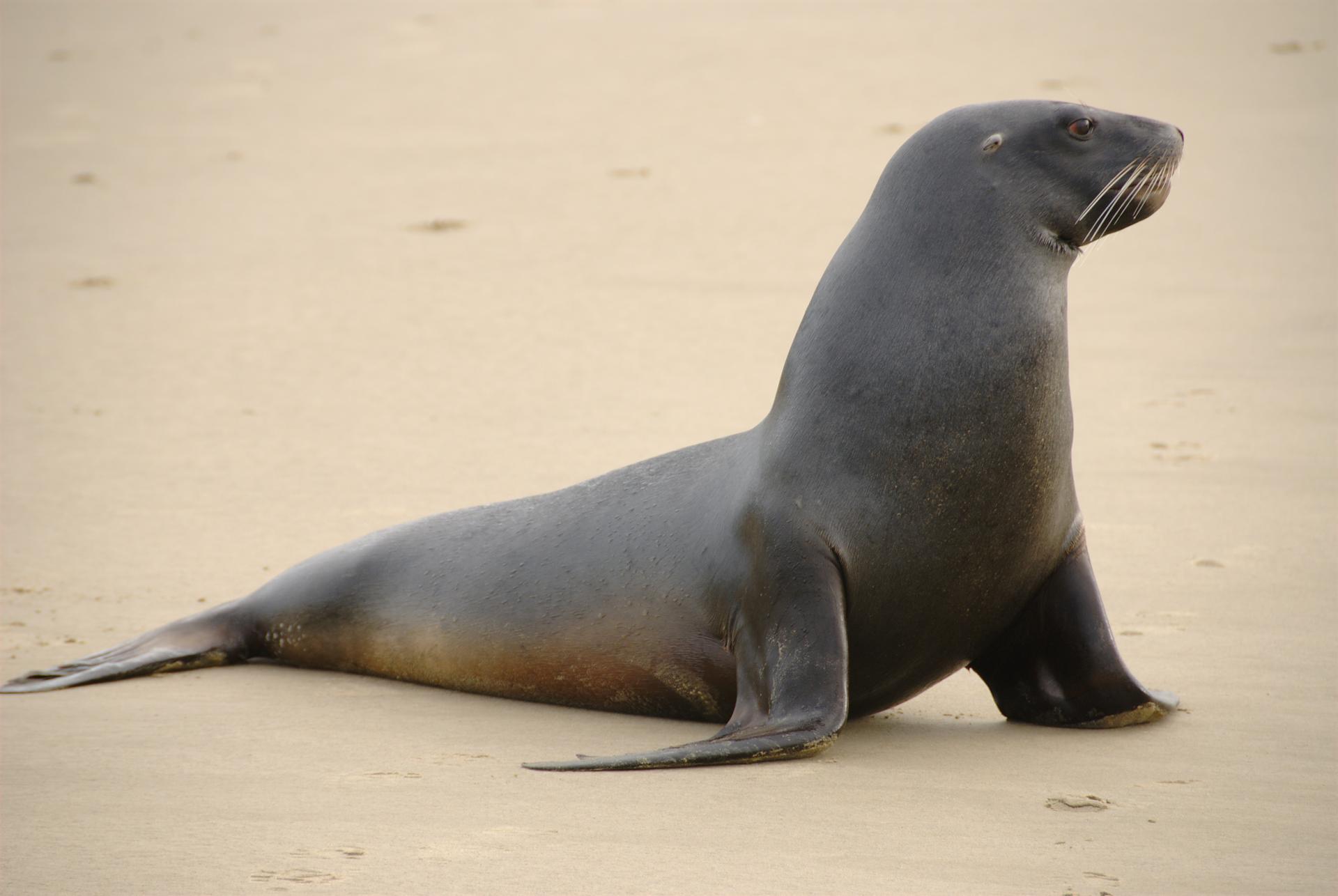Watch one of the world’s rarest sea lions make a comeback on New Zealand’s mainland
Once populous on the country’s mainland, the New Zealand sea lion was hunted to extinction there centuries ago. Recently, however, the mammal has been making a comeback: Fifteen New Zealand sea lion pups were born on the mainland last year.
Video producer Chelsea Fiske chronicled government efforts to protect the baby animals in a new film for Science Friday’s Macroscope series, “How to Save the World’s Rarest Sea Lion Pups.” She also discovered a pup in the process.
“The Department of Conservation there was very generous, especially with their one, basically, sea lion whisperer, this ranger Jim [Fyfe],” she says. “He had shown us the ropes, how to identify where sea lions have been.” And one day, as Fiske and her husband were scrambling over dunes and brush, shooting extra footage, she heard a telltale little bark.
“We knew enough to know that that was a pup,” she says. “So we looked around [and] saw an area that had been kind of flattened. Because these are huge creatures, they tend to flatten any brush that they move over. And so, we crawled under this bush and there was a little newborn pup, probably no more than a week old.”

But how did New Zealand sea lions get back to the mainland in the first place? That’s another story, and it all goes back to a single sea lion named “Mum,” Fiske says, adding that Mum likely swam up from one of the subantarctic islands where the sea lions had survived. In 1993, a local farmer found Mum — and her pup — on the mainland.
“All of the pups that are being born on the mainland now pretty much all descend from this one female,” she adds. “So, it was pretty remarkable. And it was pretty out of the blue, too, no known reason. She just decided, ‘I want to look for greener pastures.’”
Now, Fiske estimates there are 200 sea lions living on the mainland. Meanwhile, she says, the population in places like the subantarctic Auckland Islands — where the mammals historically survived — is in decline.
“There’s a problem with bycatch with fisheries,” she explains. “And also, that population down there is actually having to go much further to forage for their food. So, whatever the case may be, that population is decreasing. And so it makes it especially important that the mainland population is steadily on the rise — so 15 pups born this year, which is like a record.”
As for the pup Fiske found, discovering a rare baby sea lion can come with perks — like naming rights. Fiske recently asked Science Friday listeners to chime in with ideas, via Twitter.
“I was never very creative with naming my stuffed animals, so this is sort of a big task,” she says, laughing.
This article is based on an interview that aired on PRI's Science Friday.